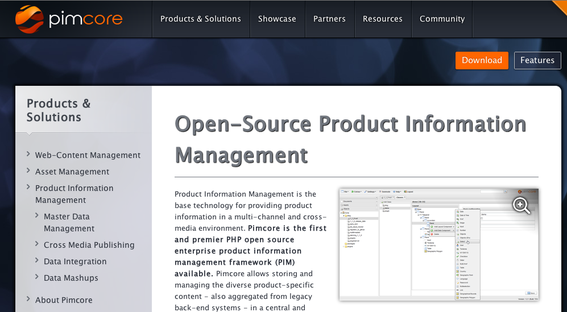As an online retail business grows, managing product data can become a monumental task. Product information management solutions can help keep track of product data — descriptions, photography, and even pricing information — improve accuracy, and ensure good customer shopping experiences.
When a new online retailer first starts selling, that merchant may have a somewhat limited number of products, perhaps a few hundred, and a limited number of sales channels, typically in a single website.
Growth can bring new levels of complexity. Stores soon may have multiple website versions — a clearance site, a Spanish language site, or similar. A call center could be added to take telephone orders. There might be catalog sales, convention or event sales, Facebook sales, sales on the Amazon marketplace, or even a brick-and-mortar outlet selling to walk-in patrons.
All of these channels need some way to get real-time or near real-time product data.
If a sale is made on Amazon’s marketplace, the resulting reduction in inventory should be reflected in the main website’s product availability. And when new inventory arrives in the warehouse, it should be available to all channels as soon as possible.
To these multiple channels add an ever increasing number of products with potentially changing packaging, costs, and even descriptions — a toy cap gun that used to be metal and wood now has a plastic handle, a package of bath salts that used to be in a light blue box is now in a dark blue sack, or a pair of boots that touted being “Made in the USA” is now manufactured in Borneo.
What Is a PIM?
Product information management — “PIM” — solutions describe the best practices and technologies used to collect, store, and distribute product information for the purpose of selling and marketing products through any number of sales channels.
PIMs can become an essential tool for merchants that:
- Have products that frequently change attributes;
- Have a large number of products;
- Have a broad range of product types;
- Have more than a few sales channels;
- Have both brick-and-mortar and ecommerce channels;
- Have the need to integrate disparate information technology solutions;
- Offer subscription services;
- Use relatively complex marketing strategies.
Where to Get a PIM
Several software companies provide PIM solutions. PIMs can be built specifically for a merchant without a huge investment in software development.
A leading open-source option is Pimcore, a PHP-based, enterprise class solution. PimSource is a new PIM project.

Pimcore is an open-source, PHP-based product information management solution.
How to Use a PIM
A PIM should become the arbiter or judge of all product information facts. It is the central repository for all of the most accurate data about products, and the consistency that it provides may be used in a number of ways.
A few specific use cases may make the point. But there are many more ways to use a PIM.
A PIM could be used in a call center. While many ecommerce-driven call centers simply use the store’s website to enter order information, having two, three, or even ten operators search and otherwise navigate through a website all day can take a toll in terms of bandwidth and site performance. But a PIM could provide an easy product lookup solution, running on a local server for call center operators to use. This call-center-specific PIM data could include additional information not found on the site, such as when the buyer last ordered a product, the likely arrival date of new merchandise, or just the cost.
A PIM could be used in a warehouse. PIM data might include the product’s “cube” or three-dimensional size and case size so that warehouse bins may be assigned programmatically. Separately, PIM data could be used to place images or product descriptions on pick lists so that employees pulling products for shipping can have both the product SKU and a visual reference to ensure that the proper product is packed.
Buyers can use the PIM. If a store’s buyers frequent shows and conventions, the PIM can be used to reference similar products or, perhaps, view historical product ordering data from an iPad or similar while the buyer is walking the trade show floor.
Marketers can use a PIM. Product inventory levels might be used to guide affiliate marketing programs or even automatically create banners and text adds for pay-per-click campaigns.
Summing Up
If an online merchant has ever had an unhappy customer because a product changed and no longer matched the description on the website, a PIM could help.
If an online retailer has ever made a sale on the Amazon marketplace, only to learn that the last one in stock was sold minutes before on the website, a PIM could help.
PIMs are not for every business and may be too much for a new seller, but growing multi-channel merchants will want to look at PIM options.




